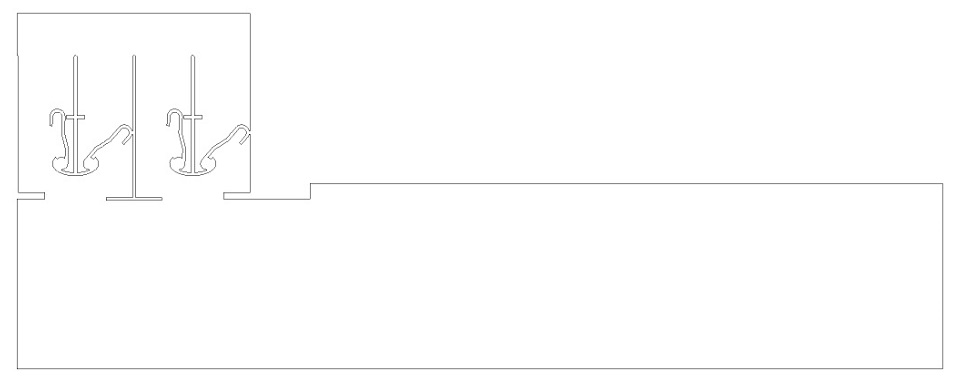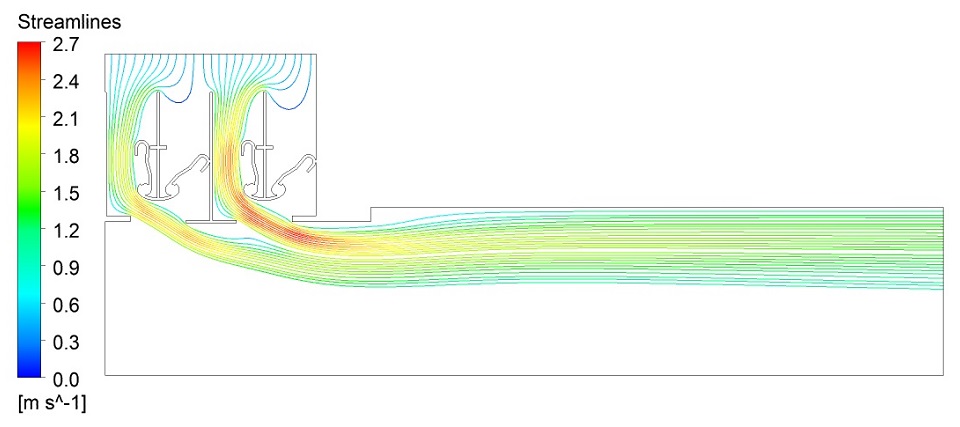Case Study – Linear Slot Diffuser CFD Model
The challenge
Watkins-Payne are designing the ventilation system for an open-plan office. They
are proposing to ventilate one part of the office by mounting linear slot
diffusers in the ceiling. They have been asked to demonstrate that the slot
diffusers will provide a uniform temperature in the space, given the heating
loads, and have asked Atkinson Science to perform a CFD study to determine the
temperature distribution in the space. The CFD model will include the ceiling and
the exit plane of the slot diffusers. To model the air flow generated by the slot
diffusers, Atkinson Science require all three components of the air velocity at
the exit plane of the diffusers.
The solution
By choosing ceiling-mounted linear slot diffusers, Watkins-Payne have decided to
use mixed-flow ventilation to condition the air in the office space. In
this type of ventilation, air from various terminal devices is injected into the
space with enough speed to generate entrainment and mixing with the stale office
air so that the desired comfort conditions are achieved in the occupied zone. The
effectiveness of this type of ventilation can be judged by the occupants’
perceptions of air movement and temperature differences in the space.
Atkinson Science created a CFD model of the slot diffuser to calculate the air
velocity components needed as boundary conditions in the model of the office
space. Watkins-Payne chose Waterloo CS-F/1200/S4 four-slot linear slot diffusers.
A cross-sectional drawing of the diffuser is shown below.

Cross-sectional drawing of the linear slot diffuser
The diffuser is 1.2 m long and has four slots each containing deflector vanes.
The vanes are angled so that the air flow divides in two and the two halves are
thrown along the ceiling on opposite sides of the diffuser. The air flow is
essentially symmetric about the plane between the middle two slots, so it is only
necessary to model one half of the diffuser. Furthermore, the length of the
diffuser is so much greater than its width that we can ignore end effects and
model the flow as two-dimensional. The computational domain of the slot diffuser
CFD model is shown below. The left side of the domain is modelled as a symmetry plane.

Computational domain of the linear slot diffuser CFD model
In the figure below, we have illustrated the flow from the slot diffuser by
plotting the streamlines made by the air as it passes through the diffuser and
enters the office space. This type of diffuser relies on the Coanda effect to make
the air cling to the ceiling, so that it is taken far away from the diffuser
before it falls to the floor and mixes with the office air. On the evidence of the
CFD solution, it is striking just how strong the Coanda effect is. The CFD
solution gave us the two air velocity components we needed in the office CFD model
(the component along the length of the diffuser can be taken as negligible),
enabling us to calculate the air flow and temperature distribution in the
office.

Computed flow streamlines
The benefits
By creating a separate CFD model of a linear slot diffuser, Atkinson Science were
able to prescribe accurate boundary conditions for the slot diffusers in the CFD
model of the open-plan office.
Read the case study of the open-plan office.